Choosing the Right Breadboard Maker: Simulators & Tools for Every Project
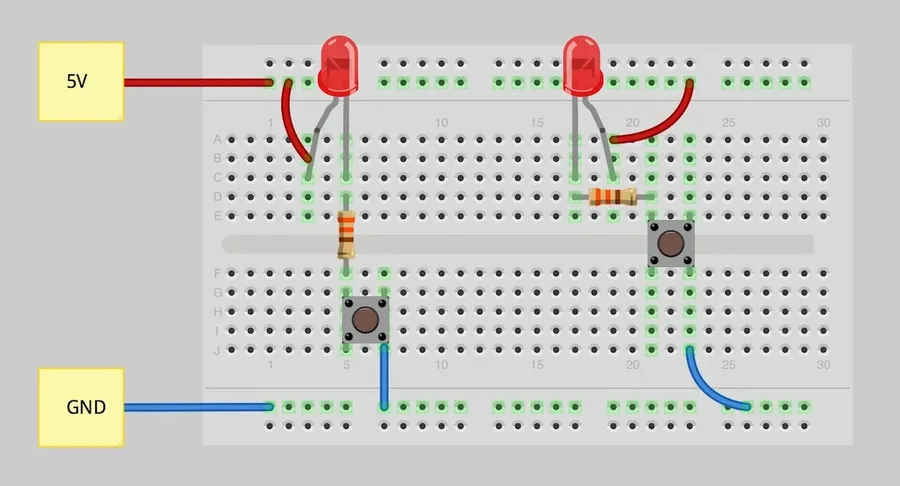
In the realm of electronics, breadboards serve as the fundamental playground for prototyping and circuit design, bridging the gap between theoretical concepts and physical applications. This article delves into the world of digital breadboard makers, analyzing a range of online simulators and tools available for both novice and experienced makers, akin to crafting the perfect ingredients for a recipe – we'll explore what each tool offers so you can choose what best suits your project. Through this exploration, we aim to demystify circuit design, emphasizing how modern tools from [breadboard maker] can accelerate innovation and transform your ideas into tangible electronics.
Understanding the Role of a Breadboard Maker

Breadboard makers, encompassing both software and online simulators, serve as essential tools for electronic prototyping by providing a virtual environment to design and test circuits before physical implementation. This eliminates the risks associated with physical component damage and minimizes the time spent on repetitive manual rewiring, significantly enhancing project efficiency and safety.
A breadboard maker's fundamental function is to replicate the functionality of a physical breadboard, allowing users to simulate circuit connections and test their designs. This capability is crucial for both educational purposes and professional engineering, facilitating an iterative design process where mistakes are easily rectified without the wastage of physical components.
Top Online Breadboard Simulators: A Comparative Look
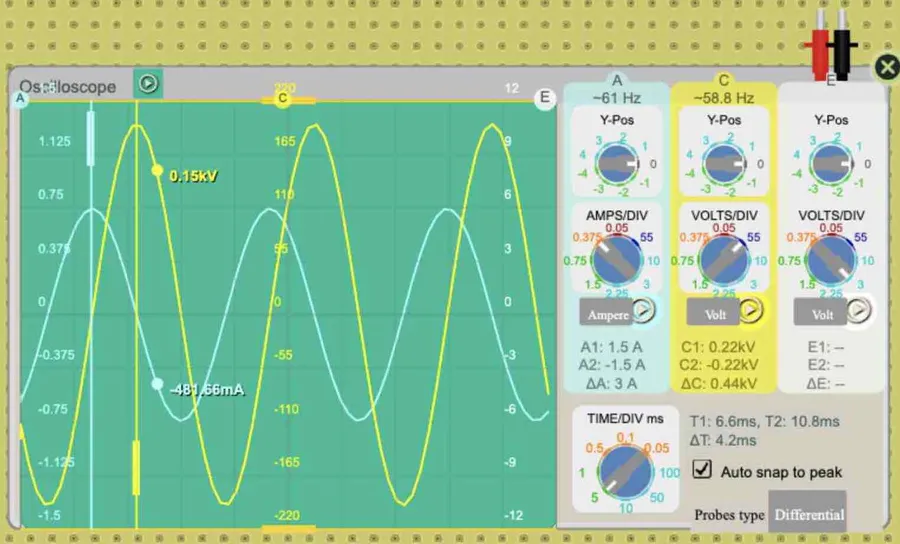
Online breadboard simulators are essential tools for electronics enthusiasts, students, and engineers, providing a virtual environment to design, test, and simulate circuits without the need for physical components. This section offers a comparative analysis of leading online breadboard simulators, highlighting their unique features and suitability for various users.
| Simulator | User Interface | Component Library | Simulation Accuracy | Ease of Use | Suitable For |
|---|---|---|---|---|---|
| Tinkercad Circuits | Intuitive drag-and-drop interface | Extensive, covering basic components and some microcontrollers | Good for basic circuits, less accurate for complex analog designs | Beginner-friendly, suitable for educational purposes | Beginners, Educators |
| CircuitLab | Professional-grade with schematic capture and simulation | Comprehensive library of components, including advanced ICs | High accuracy, supports complex analog and digital simulations | Moderate learning curve, suitable for intermediate to advanced users | Students, Engineers, Advanced Hobbyists |
| breadboard.electronics-course.com | Simple and clean interface, focused on basic breadboard simulation | Basic set of common components, designed for simple simulations | Adequate for basic circuit design, may lack in complex scenarios | Very easy to use, ideal for beginners learning fundamental concepts | Beginners, Educators |
Offline Breadboard Design Tools: Software Options
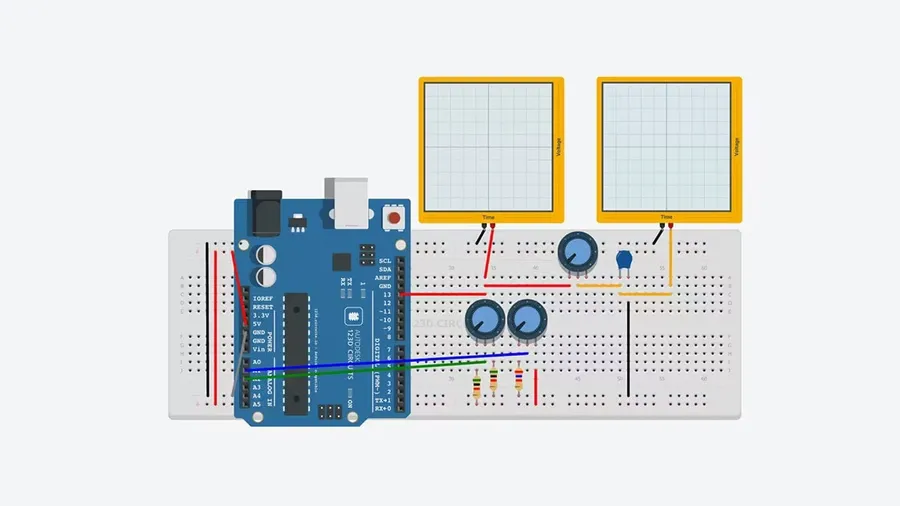
For advanced users who require offline access and more sophisticated features, several software options exist for breadboard design. These tools often provide deeper component modeling, system analysis capabilities, and a robust offline experience, catering to complex projects where precise control is necessary. This section explores popular choices like Fritzing and LTSpice, highlighting their unique strengths.
| Feature | Fritzing | LTSpice |
|---|---|---|
| Primary Use | Visual breadboard design and documentation | Circuit simulation and analysis |
| Component Modeling | Good for standard electronic components, some custom parts | Excellent for detailed component modeling, especially semiconductors |
| System Analysis | Limited simulation capabilities | Powerful simulation engine, supports transient, AC, DC analysis |
| User Interface | Intuitive visual interface, suitable for beginners | Steeper learning curve, technical interface focused on analysis |
| Offline Access | Full offline functionality | Full offline functionality |
| Target User | Hobbyists, educators, and visual learners | Engineers and advanced users focused on simulation |
Fritzing is known for its user-friendly interface and strong visual approach to breadboard design, making it an ideal choice for beginners and educators. It allows users to create breadboard layouts and generate schematics simultaneously. This tool is particularly useful for designing and documenting simple to moderately complex circuits, with a focus on visual clarity and physical representation. While it does offer some basic simulation features, its strength lies in its ability to assist with creating visual project documentation and PCB layout design.
LTSpice, on the other hand, is a powerful circuit simulation tool developed by Analog Devices. It's designed for detailed circuit analysis and offers exceptional capabilities in simulating complex analog and digital circuits. LTSpice excels in component modeling, enabling users to accurately represent real-world components, especially semiconductors. Its robust simulation engine supports transient, AC, and DC analyses, making it suitable for professionals and advanced users who need precise circuit behavior predictions. Although the interface may be more challenging for beginners, LTSpice is a gold standard for circuit simulation and analysis. It is an indispensable tool for those seeking to deeply understand and validate their designs before implementing them.
Features to Look for in a Breadboard Maker
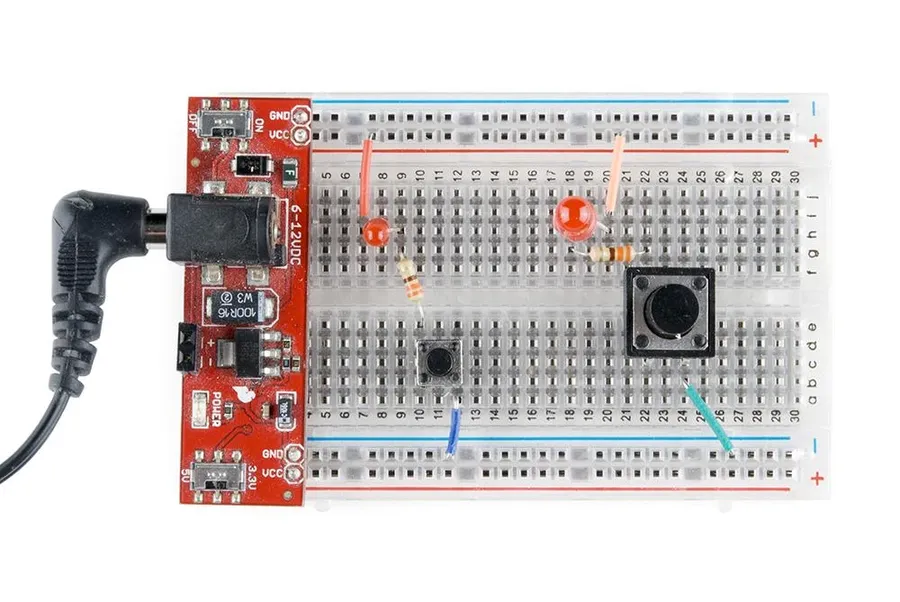
Selecting the appropriate breadboard maker involves considering several key features that directly impact the efficiency and effectiveness of your electronic design process. A robust tool should not only facilitate the basics of circuit design but also support advanced simulation and analysis. The optimal choice hinges on the user's proficiency, project scope, and desired functionalities.
| Feature | Description | Importance |
|---|---|---|
| Component Library Size | The range and variety of available virtual components. | Essential for handling diverse projects, from basic to complex circuits. |
| Ease of Wiring and Connection | The intuitiveness of connecting components via drag-and-drop or similar tools. | Crucial for smooth and speedy workflow, minimizing user frustration. |
| Simulation Modes | The availability of different simulation types (e.g., DC, AC, Transient). | Vital for testing different circuit behaviors under varied conditions. |
| Support for Electronic Components | The range of components supported (e.g., resistors, capacitors, ICs). | Required for compatibility with different types of projects and circuit designs. |
| Support for Circuit Complexities | The tool’s capacity to handle both simple and intricate circuit designs. | Necessary for users that handle advanced projects. |
| Helpful Tutorials or Guidance | Access to educational materials and practical guidance. | Benefits beginners by providing clear learning and effective use of the tool. |
Breadboard Maker for Education and Training
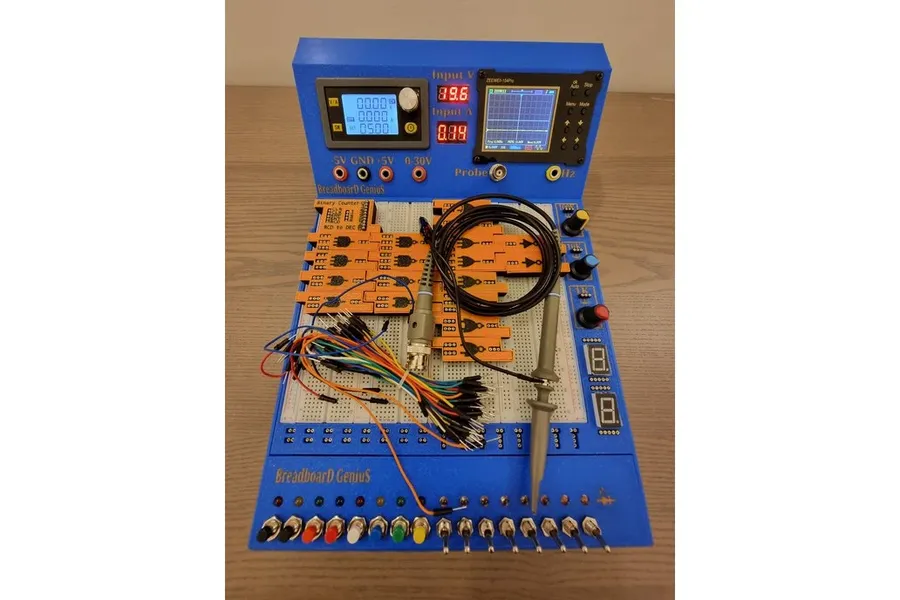
Breadboard maker software and online simulators are revolutionizing STEM education by providing virtual labs where students can safely and effectively learn circuit design principles. These tools offer an interactive and visually engaging platform that significantly enhances the learning experience, making the often complex concepts of electronics more accessible and understandable.
The core educational benefits of using breadboard makers include:
- Safe Experimentation
Students can experiment without risk of damaging components or causing electrical hazards. - Visual Learning
The graphical interface of breadboard simulators allows students to see the flow of electricity and the impact of different circuit designs in real time, thus enhancing comprehension. - Repeatable Experiments
Students can easily reconfigure and test different circuit configurations without the hassle of physical rewiring. This allows more time on learning and less time on setup. - Accessibility
Breadboard software removes the need for expensive physical components, making STEM education more equitable and accessible to students of all socio-economic backgrounds. - Immediate Feedback
Simulation tools offer immediate feedback on circuit functionality, assisting students in quickly identifying and correcting errors.
Moreover, breadboard simulators are designed to cater to varying skill levels, making them suitable for both introductory and advanced courses. The intuitive interfaces and guided tutorials provided by many platforms further enhance usability and promote independent learning among students. This combination of safety, accessibility, and interactive features makes breadboard makers a valuable tool for modern STEM education.
Advanced Features: From Simple Circuits to Complex Projects
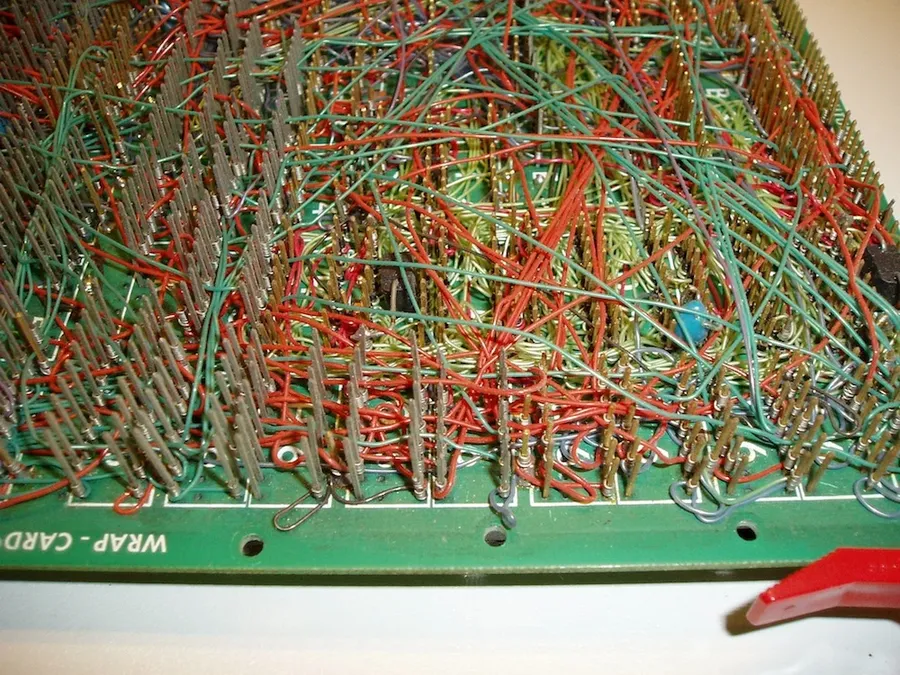
Breadboard maker software transcends basic circuit simulation, offering robust capabilities for handling advanced circuits. These tools are crucial for simulating intricate analog and digital systems, supporting integrated circuits, and enabling the effective debugging of complex configurations. The ability to accurately model these complex interactions is essential for moving from simple concepts to intricate real-world applications.
A critical aspect of advanced breadboard simulation is the capability to handle a wide range of electronic components and systems. Here’s a look at key areas:
- Analog System Simulation
Effective tools accurately model analog circuits, including operational amplifiers, filters, and other components where continuous signals are crucial. This includes the simulation of non-linear behavior and temperature effects. - Digital System Simulation
Robust simulation of digital circuits involving logic gates (AND, OR, NOT, XOR), flip-flops, and counters, which are essential for digital logic design and verifying the correct sequence of digital operations. - Integrated Circuit Support
Advanced software provides support for a large variety of integrated circuits, such as microcontrollers, sensors, and communication chips. This level of simulation allows for testing full system designs before implementing them in hardware. - Debugging Tools
Integrated debuggers are essential, allowing users to monitor voltages, currents, and signal waveforms directly during simulation. These features facilitate locating and correcting errors in complex circuit designs effectively.
The performance of breadboard maker software is judged by its ability to accurately simulate complex scenarios. For instance, the simulation of a multi-stage operational amplifier circuit should precisely mirror real-world behavior, showing the correct gain, bandwidth, and phase response. Similarly, digital system simulations need to accurately model propagation delays, race conditions, and other timing related issues to prevent hardware failures.
Selecting the correct tool for advanced projects requires careful evaluation of several factors. These include the precision of component models, the capacity of the simulation engine, and the availability of necessary tools for debugging advanced system.
Frequently Asked Questions About Breadboard Makers
This section addresses common questions regarding breadboard makers, helping users differentiate between online simulators and offline tools, identify the best options for various skill levels, maximize the use of virtual breadboarding in real projects, and resolve common simulation issues.
- What are the key differences between online breadboard simulators and offline breadboard design tools?
Online simulators operate directly within a web browser, offering accessibility and collaboration features. Offline tools, which require installation on a local machine, often provide more advanced simulation capabilities, robust component libraries and system analysis tools. - Which breadboard maker is best for beginners?
For beginners, online simulators such as Tinkercad Circuits are highly recommended due to their user-friendly interfaces, extensive tutorials, and simplified component selection. These platforms offer a gentler learning curve without the need for complex software installation. - Which breadboard design tools are better suited for advanced users?
Advanced users benefit from offline options like LTSpice and Fritzing, due to their advanced capabilities in component modeling and system analysis. These platforms also support complex circuit simulations and provide extensive libraries for detailed project implementation. - How can I effectively integrate virtual breadboarding into practical projects?
Virtual breadboarding helps plan projects by letting you test your designs in simulation before physical implementation. This iterative process helps minimize errors, optimize layouts, and make real-world circuit assembly more efficient. Use virtual simulations to verify circuit functionality, and component placement before beginning physical construction. - What are some common troubleshooting steps for breadboard simulator issues?
Troubleshooting in breadboard simulators often involves checking component connections, verifying power and ground connections, ensuring correct component selection, and analyzing component parameters for proper usage. Consult the platform's help resources, tutorials, and forums for help with specific error messages or simulation failures. - Can breadboard makers handle complex integrated circuits and logic gates?
Yes, both advanced online simulators and offline tools often include support for complex integrated circuits and logic gates. Features include support for simulating various IC models, and enabling intricate logical operations, which are essential for developing sophisticated electronic systems. The handling of complex ICs is more sophisticated in offline tools. - Is it possible to simulate both analog and digital circuits effectively using breadboard makers?
Yes, most modern breadboard makers offer comprehensive simulation capabilities for both analog and digital circuits. These tools often feature sophisticated algorithms that accurately model the behavior of different types of components and circuits. Simulating complex circuits with a high degree of accuracy is a significant benefit, especially for advanced projects.
Practical Tips for Using a Breadboard Maker Effectively
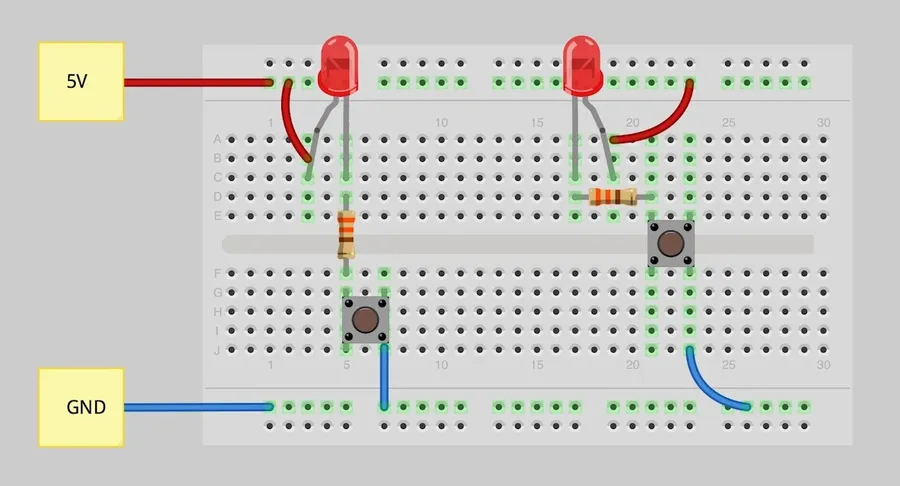
Effective use of breadboard maker tools, whether online simulators or offline software, hinges on employing methodical design practices. This section provides actionable strategies to streamline your virtual circuit designs, manage complexity, and bridge the gap between simulation and physical implementation.
- Start with a Clear Plan
Begin by sketching out your circuit diagram before you start assembling it on the virtual breadboard. This will serve as your reference, ensuring proper component placement and wiring. Use standard schematic symbols for clarity and consistency. - Organize Your Layout
Place components in a logical order that mirrors the flow of your circuit diagram. Keep related components together and avoid unnecessary crossovers in wiring. A clear layout reduces clutter and makes troubleshooting more straightforward. - Utilize Color Coding
Where available, use different colors for your wiring to differentiate power rails (e.g., red for positive, black for negative), signal paths, and control lines. This practice mirrors physical breadboarding conventions and promotes visual clarity. - Use Virtual Jumpers Wisely
In digital tools, jumpers are your breadboard wires. Keep the use of jumpers as simple and straight-forward as possible by using the shortest route and avoid weaving them around too many components. Clean jumper use leads to easier to follow wiring diagrams. - Leverage Simulation Modes
Before deploying your circuit design to a physical breadboard, take full advantage of the simulation capabilities of your breadboard maker. Check for voltage drops, current overloads, and other potential issues. This practice prevents component damage during physical construction and reduces the time spent troubleshooting. - Test Incrementally
Rather than building and testing complex circuits all at once, simulate them incrementally. Add components or sections of the circuit one at a time and verify their performance. This simplifies fault isolation if things go wrong. - Document Your Work
Document your virtual breadboard designs by using the tool's built-in features to annotate component values, mark test points, and capture notes. Clear documentation is essential for collaboration and revisiting a project at a later date. - Bridge the Gap with Physical Construction
Use the layout of your virtual breadboard as a guide for assembling the physical circuit. A well-planned virtual design simplifies the jump to physical assembly. Pay attention to the position and orientation of components when moving to a physical implementation.
As the cornerstone of electronic experimentation, breadboards, whether physical or virtual, are essential tools for anyone involved in circuit design and prototyping. Choosing the right [breadboard maker] can significantly enhance the learning process, accelerate project development, and improve the accuracy of your designs. By understanding the unique features and capabilities of various simulators and tools, you can make informed choices that cater to your specific project needs, from simple LED circuits to complex robotics systems. The ability to test and refine designs virtually minimizes risks and allows for quicker and more cost effective prototyping, ultimately driving innovation and making electronics accessible to all.
 AnyPCBA
AnyPCBA